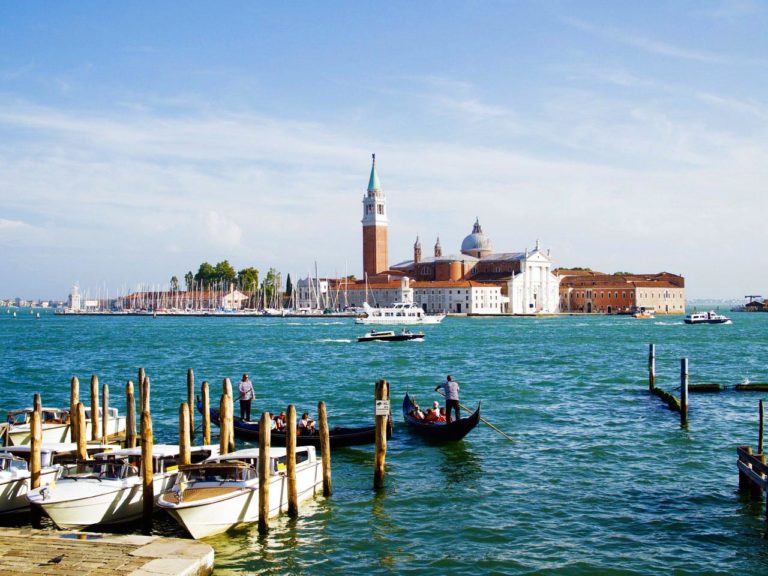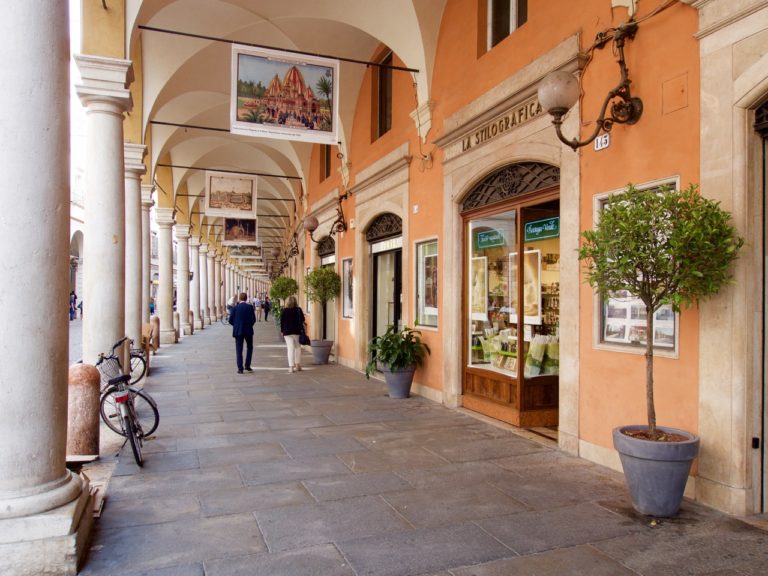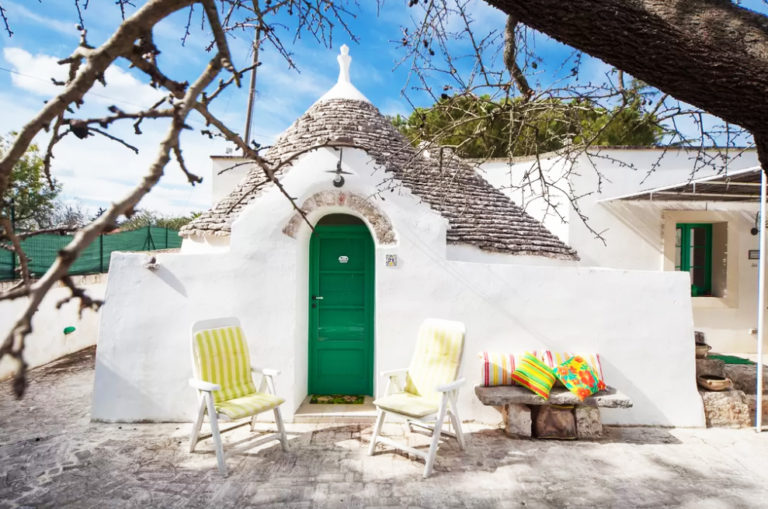6 iconic Italian dishes you didn’t know were from Emilia-Romagna (and where to get them)
If you think you can come to Italy and keep your waistline intact, you are sorely mistaken – for there is no such thing as being on a diet in this country. Between the countless gelatos (it’s hot in Italy, okay?) and the pasta and the wine, well, calories really aren’t much of a concern. Especially in Emilia-Romagna, one of Italy’s most underrated foodie regions. I just recently spent a few days in Bologna and Modena, where I visited factories and ate at as many restaurants as I possibly could in order to get more familiar with the long-lasting, mouth-watering, highly traditional history of food in this part of the world.
Tortelloni
Hands down the best meal I had in Italy – I literally came this close to ordering a second serving! This dish of ricotta-spinach tortelloni was served in a locally-sourced sweet balsamic glaze. It was at Da Danilo in Modena (see map below).
The only aspect on which locals agree on in regards to the origins of tortelloni is that they’re from the province of Modena; otherwise, your guess is as good as mine. There is, however, a cheeky rumour that the owner of the inn where Lucrezia Borgia, the famed Duchess of Ferrara, Modena, and Reggio, once stayed was in fact so enamoured by her beauty that he couldn’t resist the urge to peek into her room through the keyhole after she had gone to sleep; as the bedroom was only lit by a few candles he only caught a glimpse of her navel, which apparently was enough to inspire him and create the now-iconic pasta that night. Because Italy.
Good to know: tortelloni and tortellini are not the same thing. The former is much larger than the latter (slightly bigger than an adult palm), and is normally stuffed with cheese and served in sauce. Tortellini, at least in Italy, is usually on the meat side and served in broth as a soup.
Prosciutto
Give me prosciutto wrapped around a piece of melon, as a topping on my pizza, in a sandwich with fresh bread, I’m not picky: I’ll take any prosciutto I can get. When you’ve lived in France for as long as I have, you develop a certain addiction to charcuteries…!
Prosciutto is a Protected Designations of Origin in the European Union and must, therefore, adhere to certain rules to be considered authentic. For starters, only a handful of breeds can be used to produce prosciutto; eligible pigs have to be from Northern Italy where they are fed a diet that contains a secret blend of cereal grains and whey from the Parmigiano-Reggiano cheese production. It truly doesn’t get more local than that! The meat is heavily salted, trimmed, dried, and hung to cure for anywhere between 12 to 40 months.
If you’re particularly interested in the production of prosciutto, make sure to visit the Charcuterie Museum in Castelnuovo Rangone, right outside Modena.
Balsamic vinegar
As it turns out, I knew nothing about balsamic vinegar before I went to the oldest producer in the world, Giuseppe Giusti in Lesignana. And by this, I mean proper vinegar, not the tangy, sour stuff we have in supermarkets back home. I was, indeed, pleasantly surprised to find out that artisanal balsamic vinegar is actually quite sweet yet very potent – just a few drops are necessary to fully exploit the flavours.
The traditional way of producing this rich elixir is by boiling down just-harvested white Trebbiano grapes to create a must, which will be fermented and aged in wooden casks – for at least 12 years – in order to concentrate and become sweeter.
One of the best ways to enjoy good balsamic vinegar? By sprinkling it over aged parmesan cheese, or, if you’re feeling adventurous, over vanilla ice cream. Sounds weird, tastes delicious.
Parmesan cheese
Now, the rather large bags under my eyes – courtesy of jetlag – have prevented my face from showing the full extent of my excitement, but believe me when I say that rarely felt this giddy in my entire life. Think of Ron Swanson’s giggling when he thinks of breakfast food; this is how I felt in this gigantic parmesan dairy and warehouse. Behind me, ladies and gentlemen are a few million euros’ worth of ageing parmesan wheels.
Better than gold, if you ask me.
Legit Parmigiano-Reggiano can only be produced in a small, designated area around Modena and Bologna and must be aged for a minimum of 12 months. The younger it is, the easier it is to grate over pasta; but as it gets older, it is best enjoyed in chunks and, like I said, sprinkled in balsamic vinegar. It’s incredible how the 12 months and the, say, 48 months taste vastly different.
Lambrusco
I’ll just go ahead and say this right away: Chieto Chiarli is one of the most beautiful wineries I’ve ever seen. I’m not sure if it’s because of how typically Italian this family-owned estate looks or because of how kind and passionate the owners are, but I completely fell in love with this place.
Located in the southern outskirts of Modena, it specialises in Lambrusco wines, a sparkling and pleasant red wine very dear to the heart of locals. The wine is not aged; the grapes are harvested in late summer and bottled almost immediately, which gives the Lambrusco a unique and refreshing zing. If you’re like me and you’re not too keen on red wines, this is a way to open your palate to softer, fruitier flavours.
Tagliatelle al Ragù
I visited Bologna at the end of my journey in Emilia-Romagna and I mistakenly thought it wouldn’t, couldn’t, get better. What I fool I was! Upon the recommendation of my local buddy Nick I had lunch at Trattoria del Rosso, where I didn’t even bother to look at the menu before I ordered a tagliatelle al ragù (the local way of asking for bolognese, which, by the way, isn’t served with spaghetti) – that I generously covered in Parmigiano-Reggiano before I slurped my way through the dish in less time than I care to admit.
This “bolognese” is really more of a ragout with two kinds of meat (pork and beef) and a healthy dose of veggies chopped so finely they’re barely perceptible to sight or taste. I’ve been trying to recreate it at home ever since, to no avail.
I’ve got to go back, right?
Eating in Italy: know before you go
- Some restaurants are only open for lunch; others will be closed for the afternoon before reopening for dinner. Best to check schedules before you go!
- Restaurants will usually charge a few extra euros if you opt to sit outside on the terrace.
- Water is never free in Italian restaurants. You can choose between sparkling or still water, and it’s going to set you back 2-3 euros per bottle.
- There’s a hop-on-hop-off bus route that stops at several sites of interest in and around Modena, including the historic balsamic factory, the parmesan factory, the Ferrari museum and plant, the Charcuterie Museum, wineries, and many others. It costs €60 per person for two days and includes transportation in air-conditioned coaches as well as guided visits and tastings at every stop. I’ve done it, and I think it’s worth the price. Check it out here.






